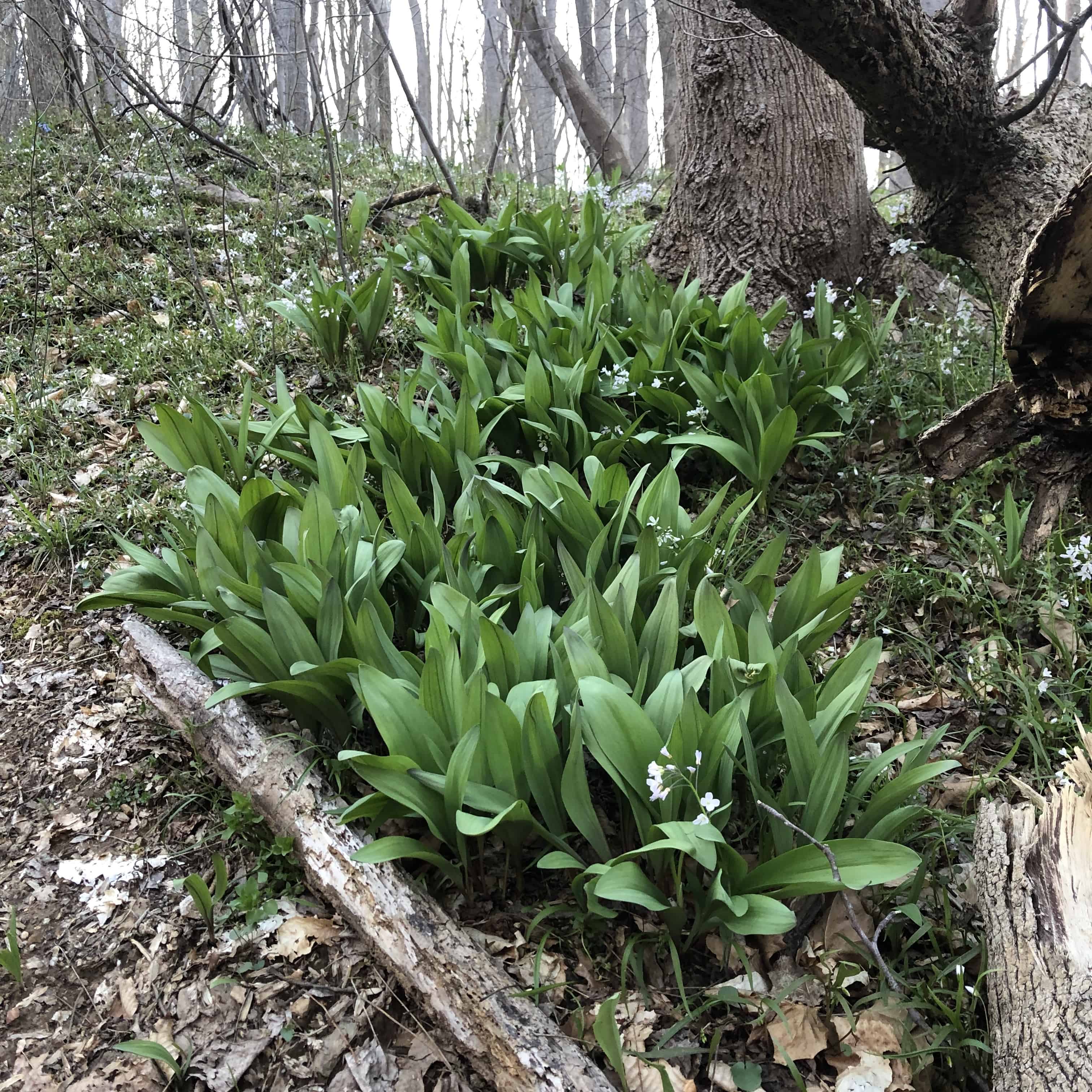Ramps are one of the first green signs of spring that appear in shady areas of the woods. Their official name is Allium tricoccum. They usually grow in patches under trees. One article stated that they grow in higher elevations in Eastern North America, but I am at sea level, and there are plenty of ramps.
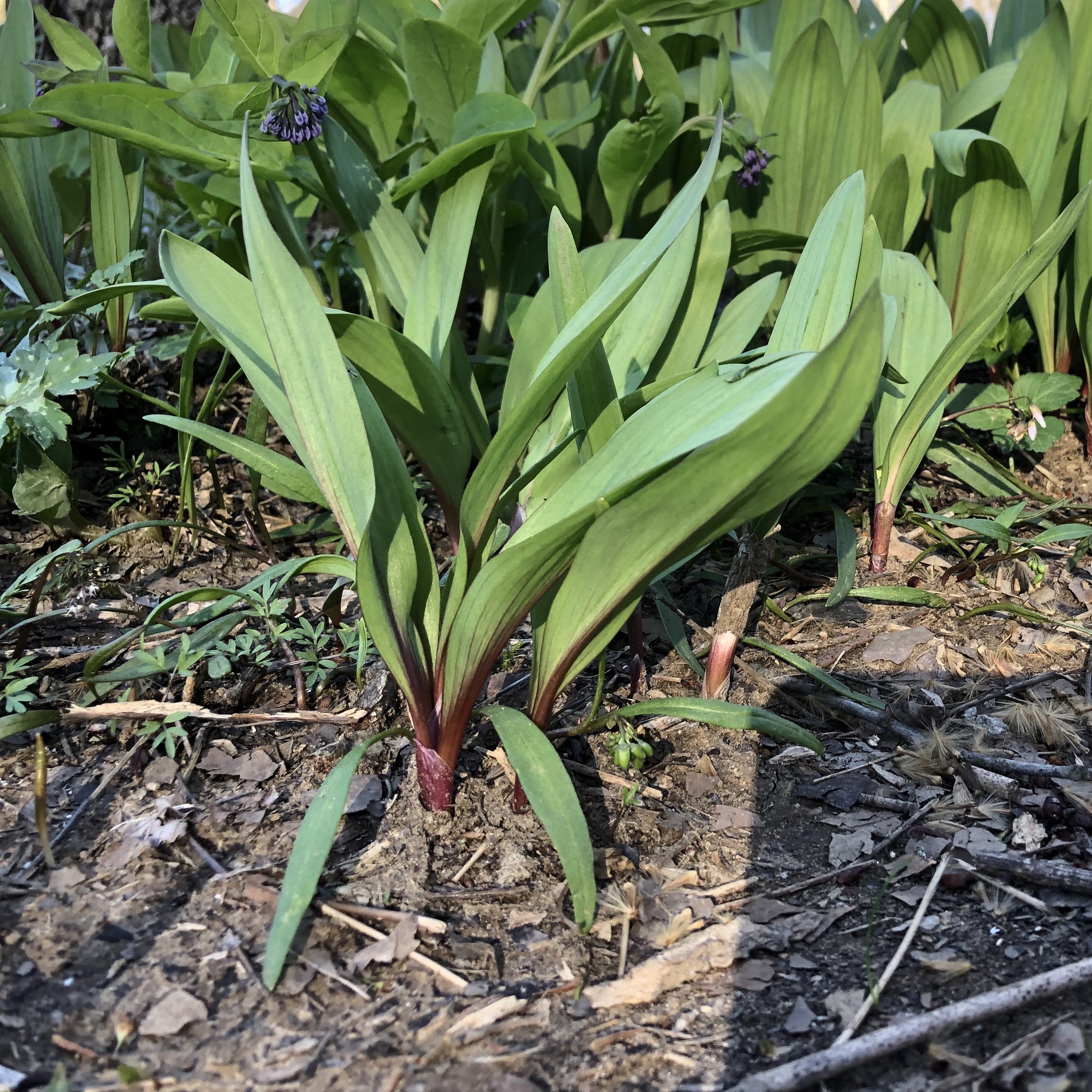
Ramps have gained popularity over the years. You can’t go to the store to buy them. They have to be harvested from the forest. Taking only the leaves, and leaving the bulbs intact, ensures that the patch will survive. If you must take the bulb, cut is just above the roots, to leave the roots so that the plant can survive. As always, when foraging, sustainability is an issue, so only take what you are going to eat. Forage deep into the woods, and leave patches close to the trailhead alone. Ramps in many areas are at risk of disappearing. Over harvesting is a real issue. Luckily in my local forest I’ve never seen a patch disturbed.
Not only do ramps add color and texture to the forest floor, they also are a culinary experience. You can grill them, pickle them for future use, or fry them. Both the green and the bulb are edible.
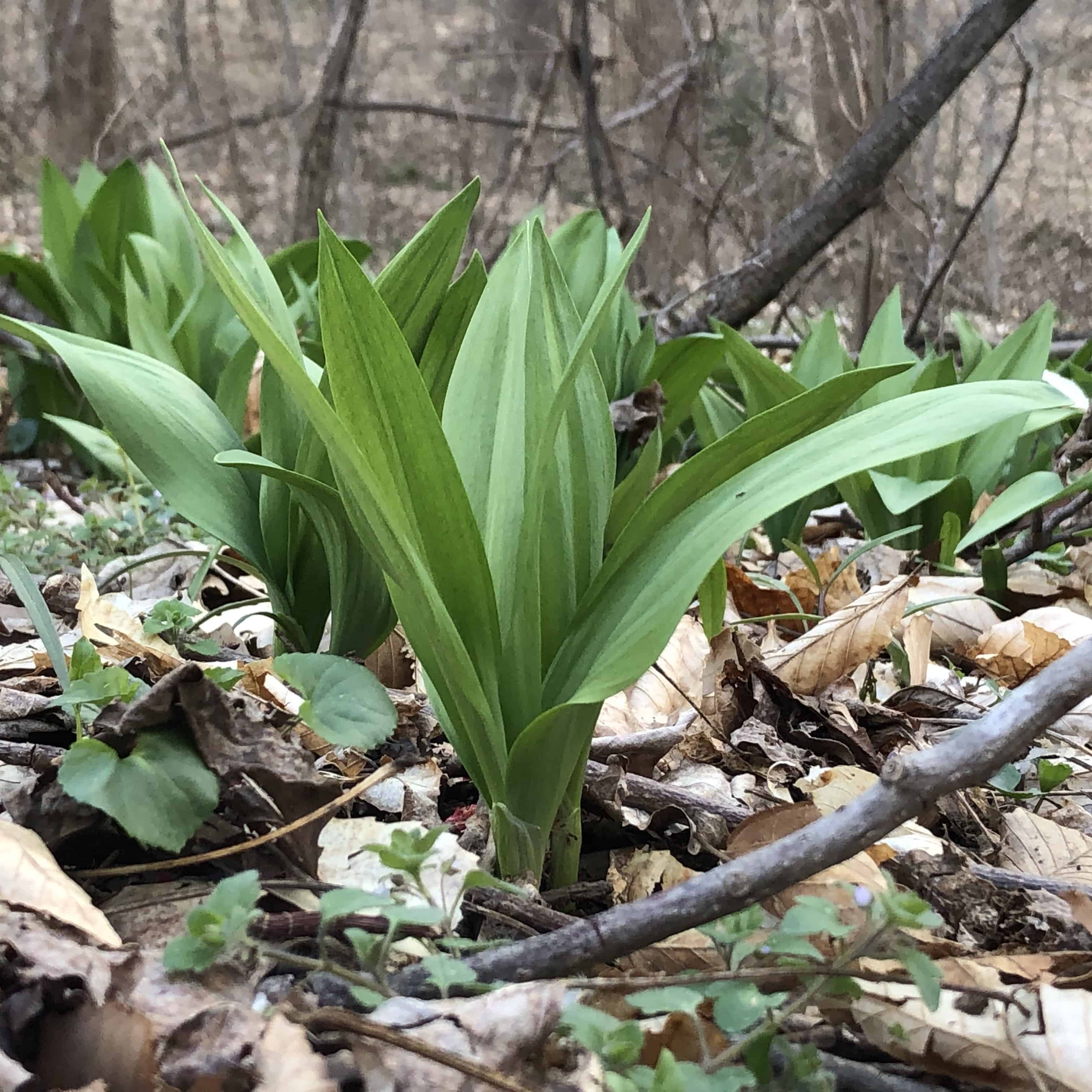
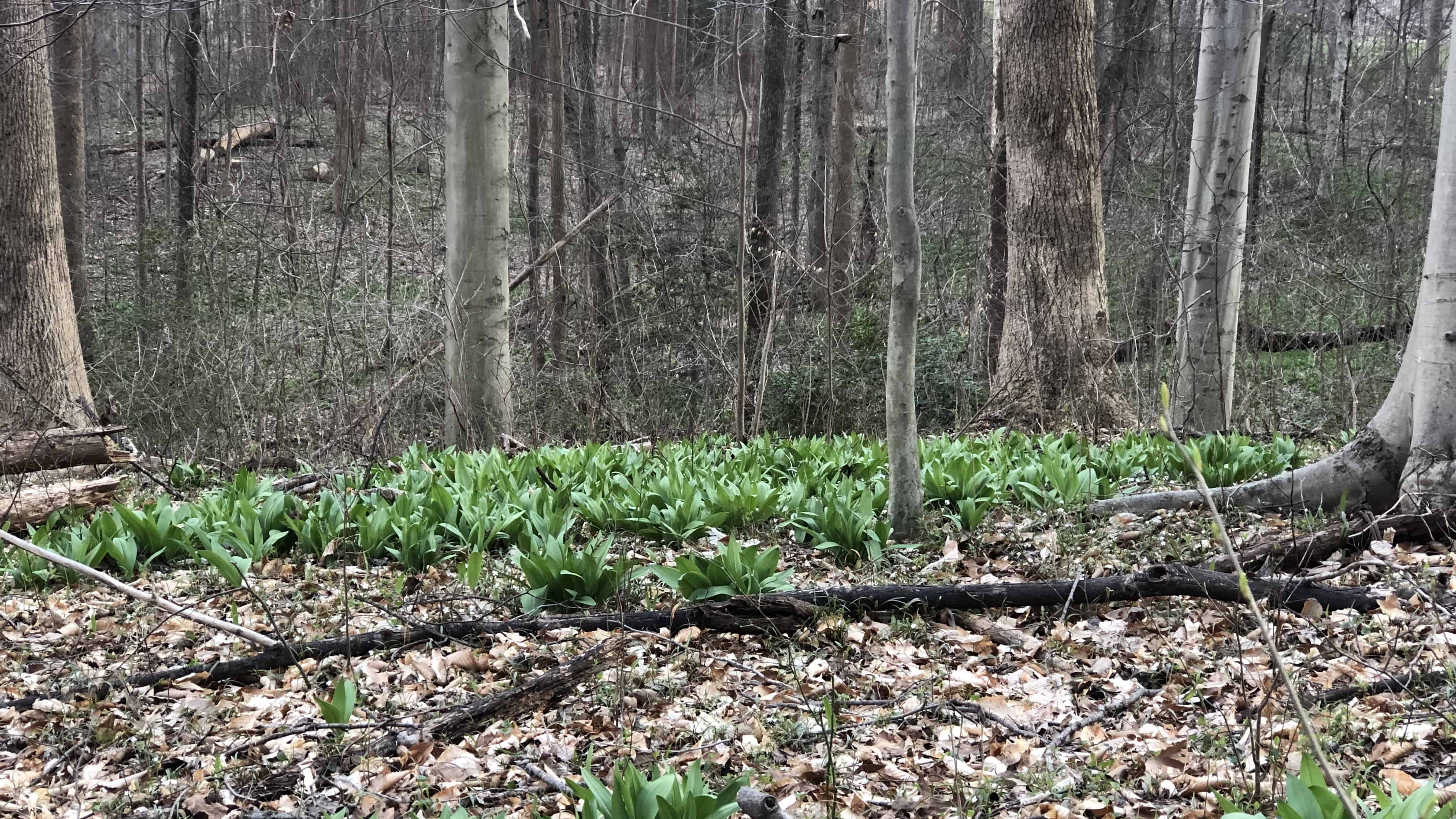
They are sometimes known as the leek of the forest. Ramps are high in vitamin C. Some say that they aid in digestion and maybe decrease cholesterol, although I didn’t find any scientific evidence to support this. Their taste is mild, and it is similar to a green onion with a few notes of garlic. When you pick them, there is a definite garlic oniony smell.
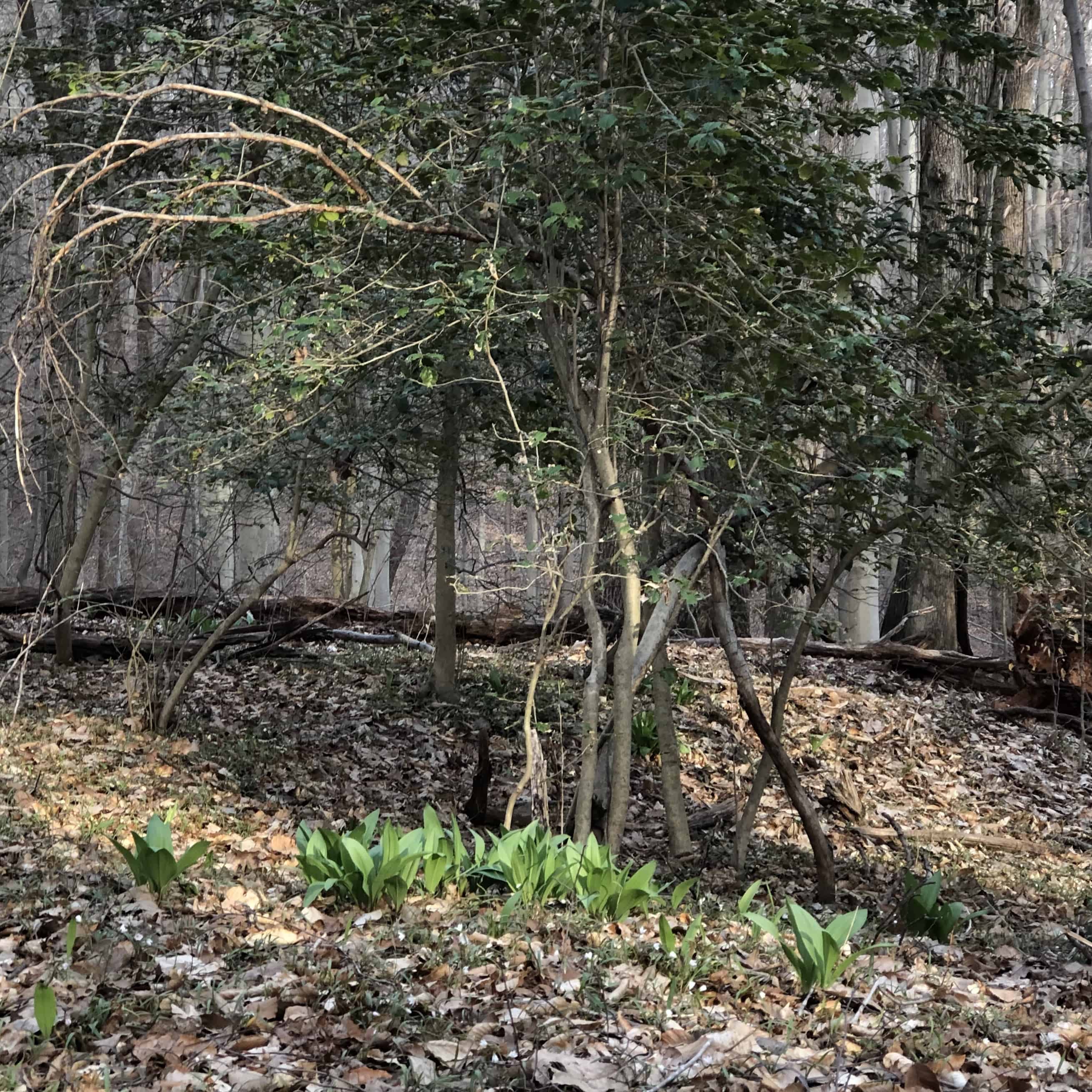
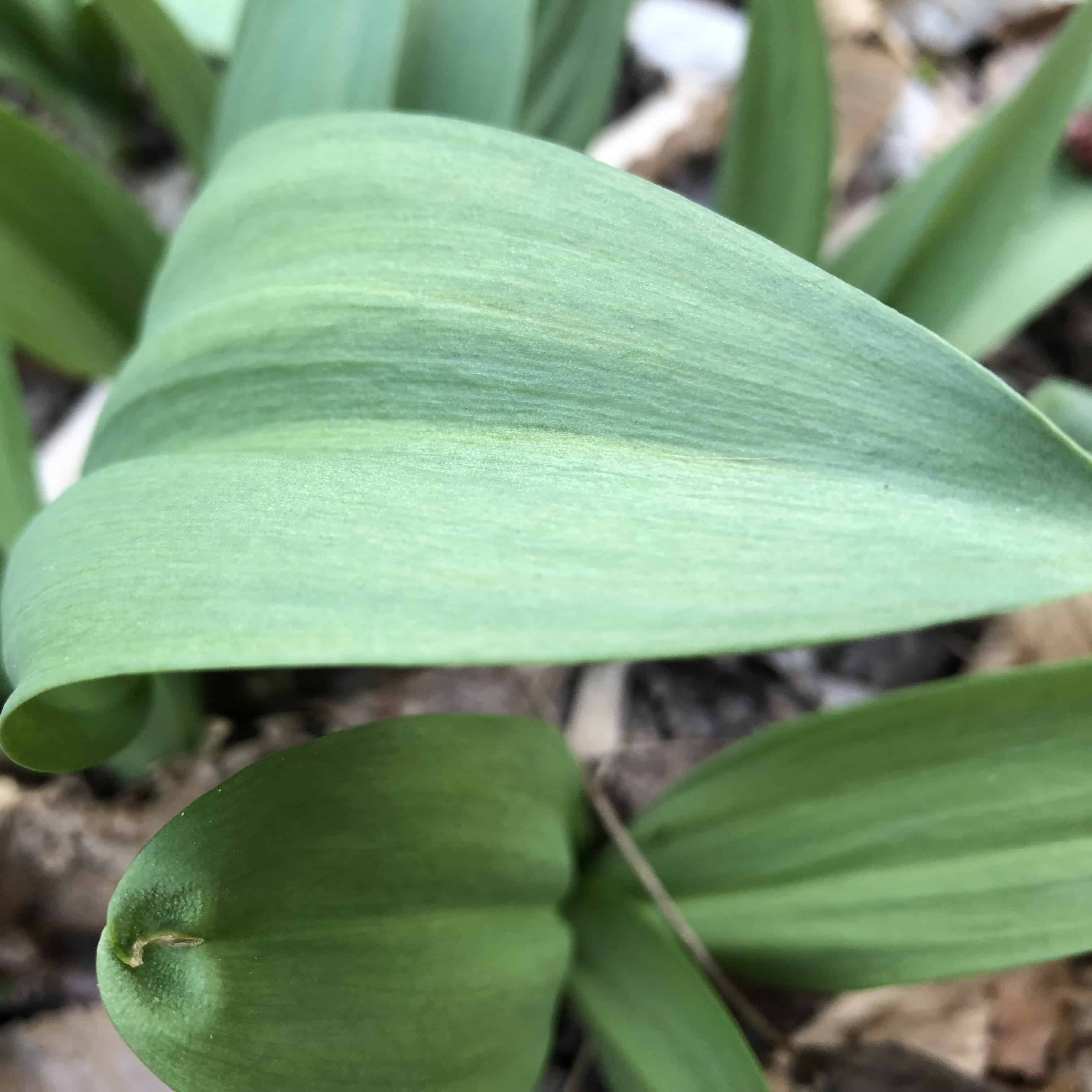
Ramps have broad, soft green leaves and they grow low to the ground. They may get 6-12” tall, but in a forest full of towering trees, this is rather small. They have a small bulb at the root.
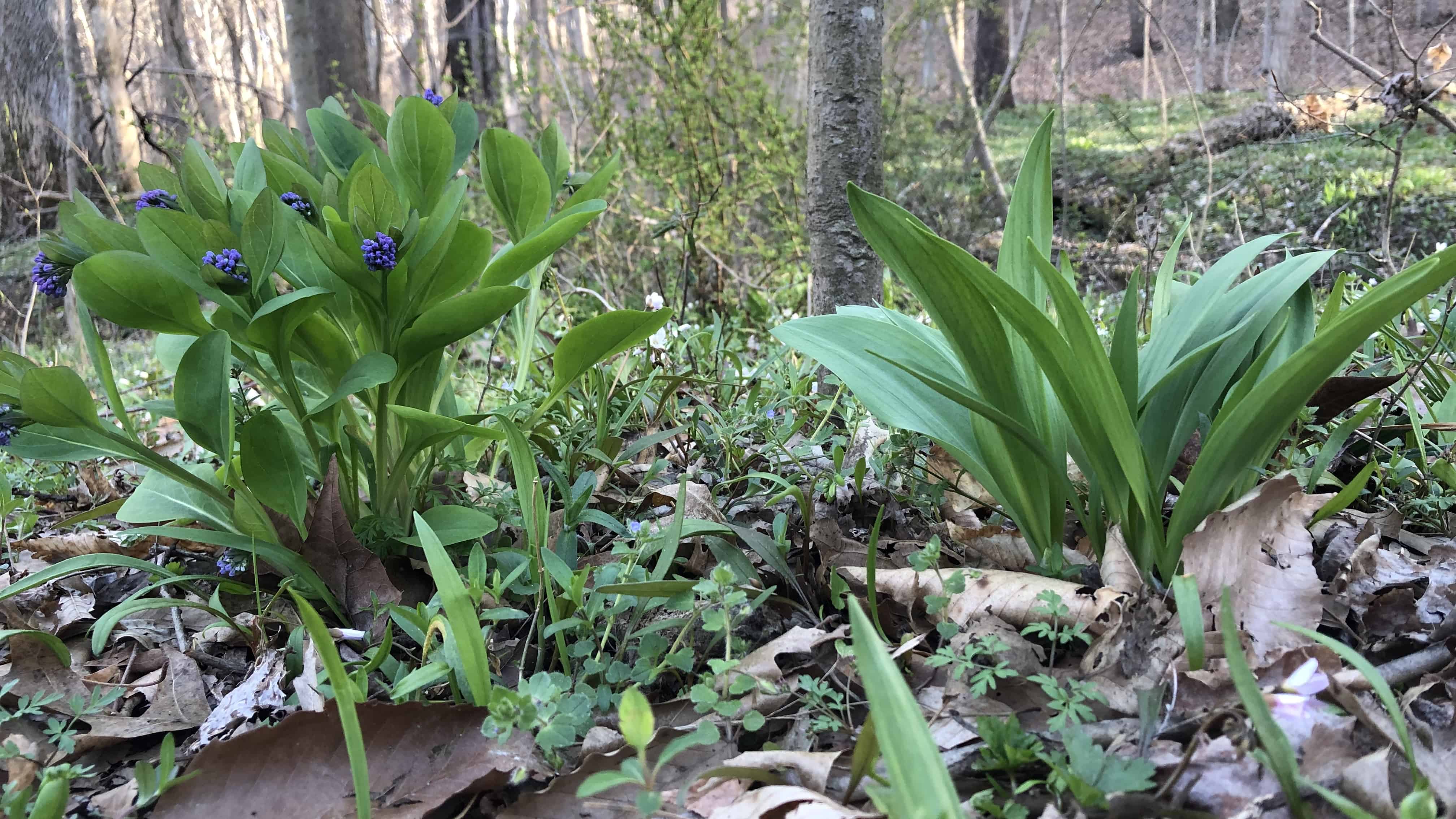
As with any type of foraging in the wild, make sure that you know what you are picking. Ramps are pretty easy to distinguish with the soft broad green leaves and distinctive smell. When in doubt, don't. This is a ramp on the right, and a bluebell on the left. Ramps don't flower.
References:
